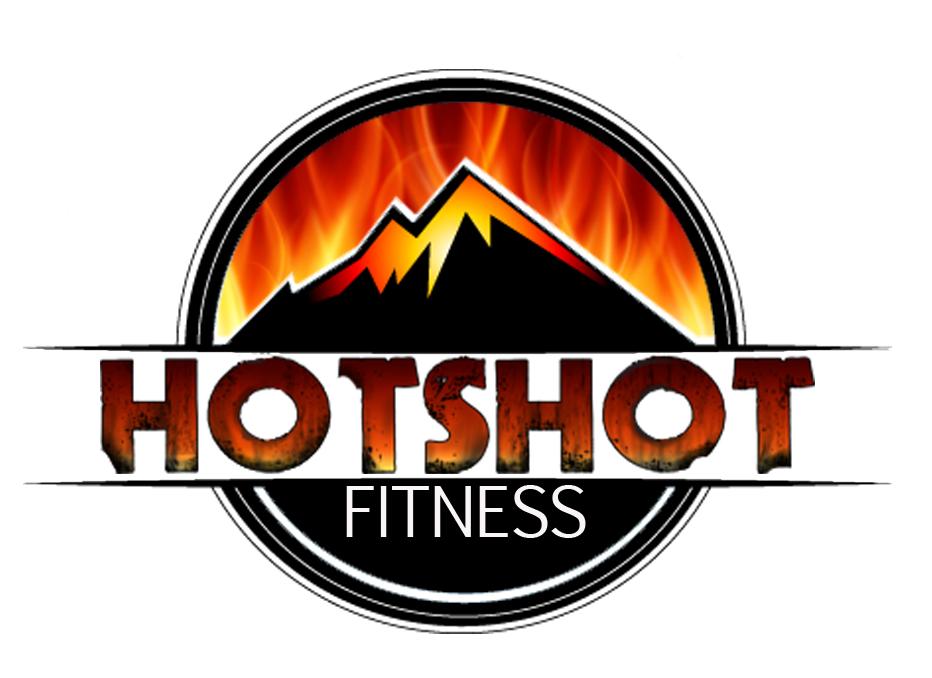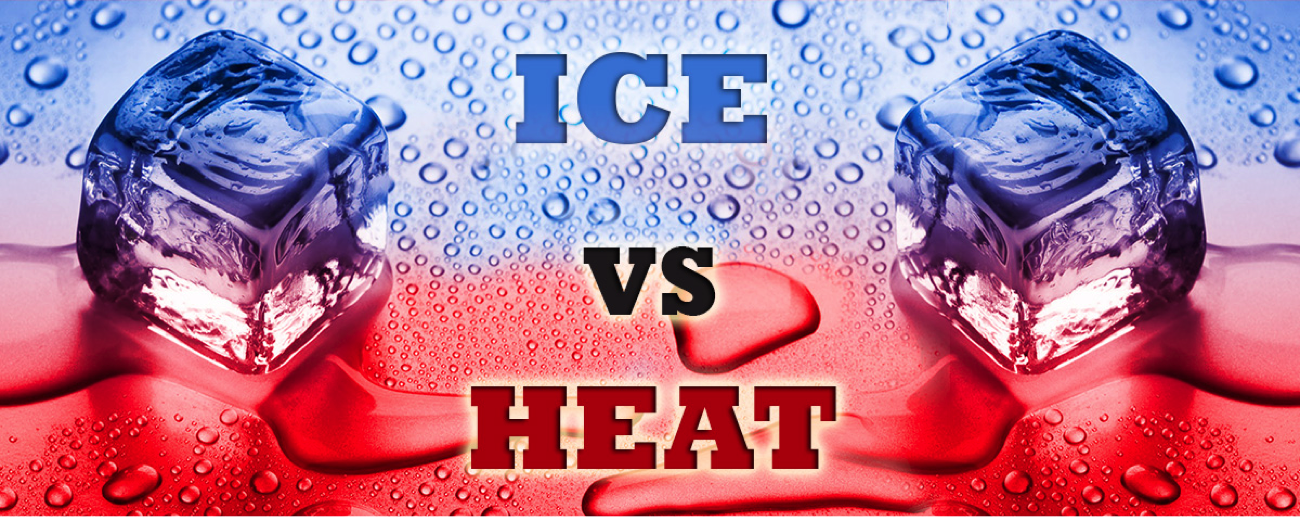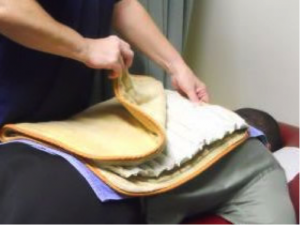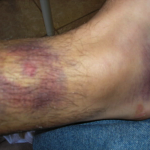BY: Anthony Harrell
Young or old, in shape or out of shape, muscle soreness happens to everybody. Like death and taxes, if you spend time pushing the physical limits of your body, you’re going to wake up sore. That part is inevitable. But what can you do to reduce those symptoms? What can you do to expedite your recovery? Like stretching, most people rely on a blend of outdated information and old wives tales to deal with pain. We here at Hotshot Fitness think that’s ridiculous. So we wanted to dig deeper into one of the most perplexing questions of our time. More perplexing than who shot Kennedy, or where Hoffa’s body is buried, is that age-old question of “My body hurts…should I ice it or heat it?
“No Pain, No Gain?”
Training for the job is as important as being on the fireline itself and there’s nothing worse than dealing with the unnecessary aches and pains holding you back. The phrase “no pain, no gain” has a time and a place. However, if you are noticing swelling, increased warmth of the skin around the painful site, or discoloration, then it’s time to drop the machismo and handle your business the right way.
Heat
Everyone likes the feeling of soothing angry muscles at the end of a long day. Hot packs are a common self-treatment option, however, have you ever wondered just what is going on underneath your skin when you put a hot pack on? Fortunately for you, we have done some science!
Effects on the Body
Heat essentially decreases the sympathetic (sometimes called “fight or flight”) response of those muscles that you brutalized during your last hike. When you add a hot pack to a sore spot, receptors for heat within the skin are activated causing the blood vessels surrounding that site to open up and allow more blood flow (Bickford and Duff, 1953). The threshold of pain that you can tolerate is then elevated, activating neurological mechanisms to reduce spasms within the muscle (Cameron, 2013). The heat allows for chemical reactions within the area to speed up and bring more nutrients and oxygen to the injured or site. More nutrients and oxygen = faster heal times.
Physiology 101
When to use it
If you are experiencing an acute injury or pain, then heat is typically not recommended. The reason being that your body has its own set of procedures it goes through to begin the healing process whenever damage is detected! When you sprain your ankle for example, you will notice swelling and very often increased warmth and discoloration around the joint. The body has began working to bring nutrients to the site, and is setting up protective mechanisms to keep you from re-injuring yourself. By applying heat to an immediately injured joint, you could increase the amount of swelling which might further inhibit your ability to activate the muscles in and around the injury. Interrupting muscle activity around a joint can lead to instability and further put you at risk for re-injury (Palmieri-Smith, et al 2007).
Even though heat may not be the best option for a new tweak you experienced during morning PT, there are other useful times to reach for the hot pack. If you are rolling out of bed and noticing your body seems stiff or takes longer than in the past to warm up, heat might be for you. Studies have shown that heat makes your body’s tissues more extensible by aiding in the reorganization fibers (Cameron, 2013). Other good uses for that heat pad include treating injuries that occurred more than six weeks prior, relief of joints that may be aching due to arthritis, and decreasing muscle spasms (Cleveland Clinic, 2014).
Ice
Effects on the Body
While heat causes your blood vessels to vasodilate (basically, get bigger), ice has the opposite effect. When applied to the skin, cold objects like ice packs constrict blood vessels. allowing less blood to flow (Cameron, 2013). With less blood flowing through an area, swelling is reduced, which in turn alleviates pain caused by the compression of structures within the injured joint. The cooling of tissues also decreases the inflammatory process by reducing the amount of metabolic reactions that the body produces for protection and healing (Cameron, 2013).
When to Use It
If you had to choose hot or cold for that new nagging knee pain, ice would be the way to go. Researchers Ohkoshi, Ohkoshi, and Nagasaki (1999) actually found that the quicker that cold can be applied to an injury, the better chances at reducing some of the inflammation and pain that accompanies it. Inflammation typically occurs within 48-72 hours after injury which indicates that this would be an appropriate time to choose this treatment method. Furthermore, compressing the area and elevating it above the level of the heart helps to drive swelling into the body’s natural highway of blood flow and fluid movement (Cameron, 2013).
Finally, icing can be uncomfortable, but should always follow this progression (Cameron, 2013):
Hotshot Fitness Recommendations:
- If you have some new bumps and bruises, grab some ice.
- Ice for 15-20 minutes then take a break
- Don’t ice an area more than once an hour
- While icing, throw a compression like an ACE bandage around the site if possible and elevate the area above the level of the heart
- To help you remember what to do, here’s a handy acronym: RICE > Rest, Ice, Compression, Elevate
- Remember, the inflammation cycle lasts about 3 days and whilst icing is most helpful within this time, there are other things you can do. Tumeric has been found to reduce inflammation inside the body, in turn helping you to recover quicker, lose weight faster and train harder, so you might want to give these turmeric pills a try alongside icing.
- After inflammation has decreased, allow your body to run it’s natural course of recovery! If you want to give your body a natural boost, you might even want to consider trying out products such as CBDA oil that can, in some cases, ease your swelling. For more information about the potential health-enhancing benefits of CBDA oil, go to https://myriamshopehemp.com/product/cbda-oil/. On a similar theme, you could also try CBD cream. The anti-inflammatory properties will help your body to reduce inflammation. There are CBDistillery Coupons available to knock 25% off the price of these creams.
Ultimately, if you are getting worse or seeing no improvement, then visit a doctor. (Editorial Note: Not going to the doctor might have been cool for your grandfather’s generation, but let’s not forget that’s the same generation that thought smoking was healthy and drinking during pregnancy was no biggie.)
- If you are dealing with an old nagging injury, heat or ice can be helpful! You know your body best, so try either one. When using heat, follow the same timing parameters and always protect yourself with towels between your skin and the hot pack
[highlight]Bonus: Interested in learning how to make your own cold pack? We got you covered over in our DIY series. With just a Ziploc bag, some rubbing alcohol, and some water, you can make your own cold pack! Seriously. It is ridiculously easy. Check it out![/highlight]
About the Author:
Anthony Harrell spent three years with the Ukonom Hotshots. His adventures in fire inspired him to pursue a career in Physical Therapy, and he recently graduated from the Doctor of Physical Therapy program at the University of California, San Francisco (UCSF) / San Francisco State University.
He lives in the San Francisco Bay Area with his wife, Julie, and their dogs. He has been a contributor to Hotshot Fitness since 2016.
Interested in writing for us? Check out our contributor guidelines for more information.







